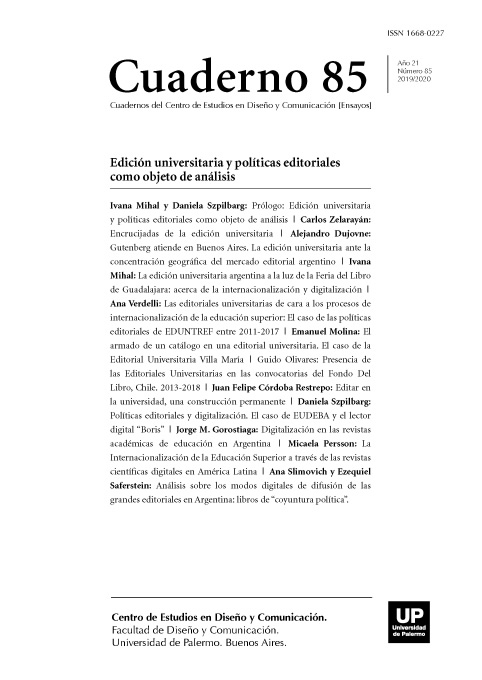Editar en la universidad, una construcción permanente
Abstract
One of the main tasks that are developed by the university is editing and publishing contents. To the Latin american case, this process, is relatively new and in order to achieve the goal, each of the branches that make part of the whole university body had to review what does editing mean in the academic environment and specially, what its social function is. Many are the achievements and findings in the past decades but also it is clear that the training and the will to learn are there; the editing activity is alive, in constant improvement and it certainly is a passionating labor. That’s the reason why we should be open minded to the challenges. The purpose of this text is to reflect about the editorial achievements and propose new editorial paths.
References
Certeau, M. de. (2000). La invención de lo cotidiano. 1. El arte de hacer. México, Universidad Iberoamericana.
Córdoba-Restrepo, J. F., Marken Farley, S. y Valbuena, S. (2003). Balance preliminar de la actividad editorial en Colombia, 1998-2002. Bogotá, ASCUN y IESALC UNESCO.
Giménez, E. y Córdoba, J. F. (2018). “Ciencia, circulación y apropiación: la edición universitaria y el acceso abierto”. En: Dosier Cerlalc. Derecho de autor. Bogotá.
http://cerlalc.org/wp-content/uploads/2018/03/CERLALC_Publicaciones_Derecho_de_autor_120318.pdf consultado el 26 de febrero de 2019. pp. 56-70
Franco, E. “Capacitación en distribución”, ponencia presentada en la Fundación Gilberto Alzate Avendaño, Bogotá, 8 y 10 de junio de 2009.
Nogueira Dobarro, Á. (2009). Universidad y edición. Conocimiento y sociedad. Bogotá, ASEUC.
Pérez Restrepo, J. (1995). “Editorial y universidad. Editorial Universidad de Antioquia” (inédito). Medellín.
de Sagastizábal, L. (2014). “La editorial universitaria como emprendimiento”. En: La gestión económica en la editorial universitaria. Santa Fe, Ediciones Universidad Nacional del Litoral.
Los autores/as que publiquen en esta revista ceden los derechos de autor y de publicación a "Cuadernos del Centro de Estudios de Diseño y Comunicación", Aceptando el registro de su trabajo bajo una licencia de atribución de Creative Commons, que permite a terceros utilizar lo publicado siempre que de el crédito pertinente a los autores y a esta revista.


